Repeater Visit June 18, 2016
The purpose of this visit was to remove our old solar panels and make
preparations for installing new panels. We also wanted to bring down the
repeater in order to switch to a new Arcom controller. On this trip we had
Tim, KE7TAC, Cameron, AF7DK, and Dale, K7FW.
The main word to describe this trip is MOUSE (or more precisely MICE).
But more about that later....
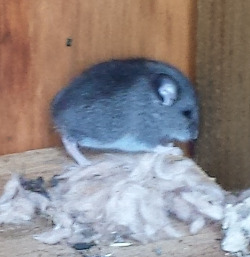
We started up the mountain at 9 AM. They weather was not bad at sea level
but the mountain top was shrouded in fog. We did see some nice views on
the way up. Looking north west we had a nice view of Arch Cape.
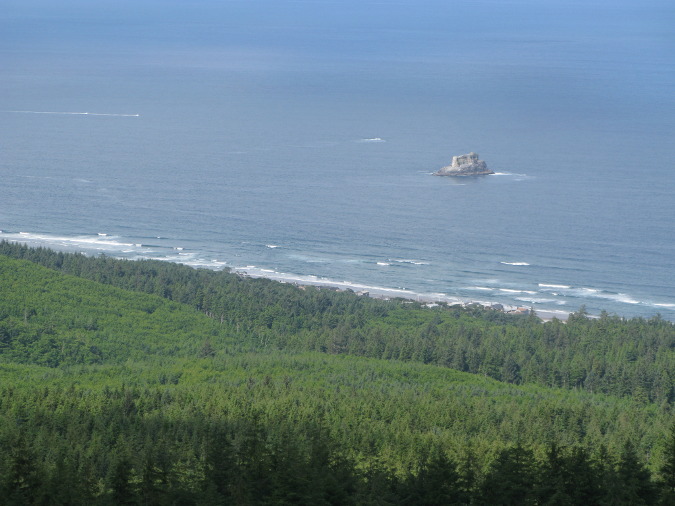
And a looking back a bit to the southwest a view of the ocean and logged
area.
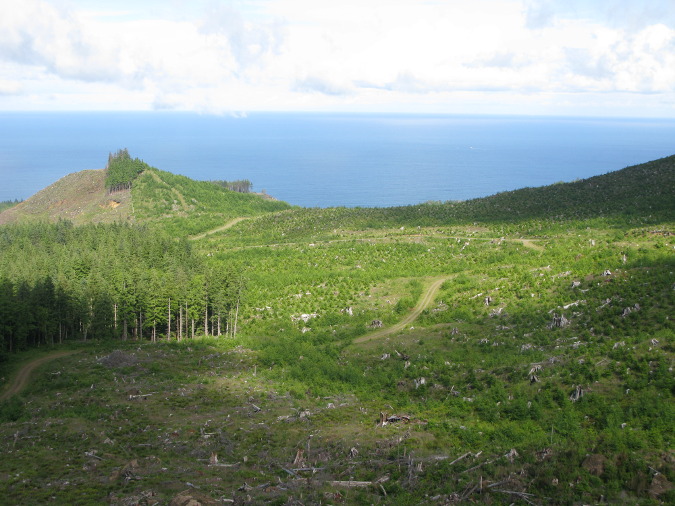
As we got higher we encountered fog and also couple rocks that needed
to be moved. In this photo Cameron (left) has already moved a rock a bit
smaller than the one seen on the right side of the photo next to Tim. He
said something about needing a good pry bar to move that larger rock.
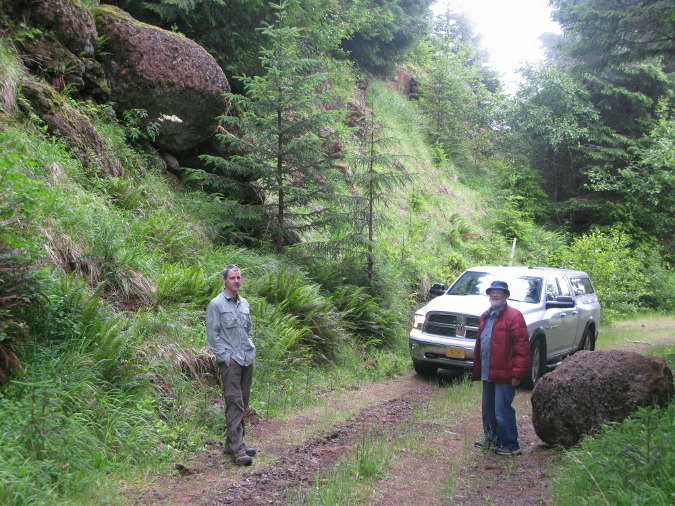
In the winter the sun is quite low on the horizon, about 21 degrees at solar
noon in mid-December. I wanted to get an idea if the nearby trees were going
to cast shadows on the panels. Cameron, left, is recording angle to horizon
measurements estimated by Dale. Our old panels where somewhat split between
the ideal due south position with the panel on the right being a bit east of
true south and the panel on the left being a bit west of due south. The new
panels will face south. We should be safe from winter shadows now however
there are trees growing to the south that could cause problems with winter
shading in future years.
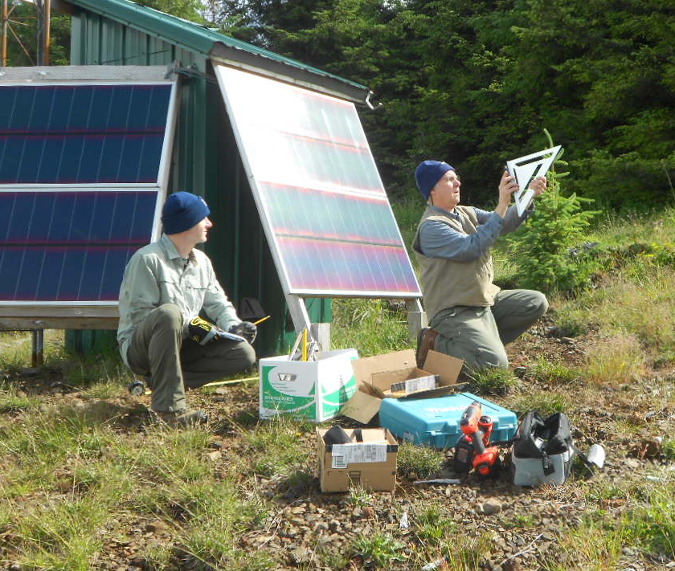
Here are a couple views from the repeater site looking due south. Tim is
holding a stick at what represents due south from the side of the repeater
building. This photo taken while standing on the east side of the building.
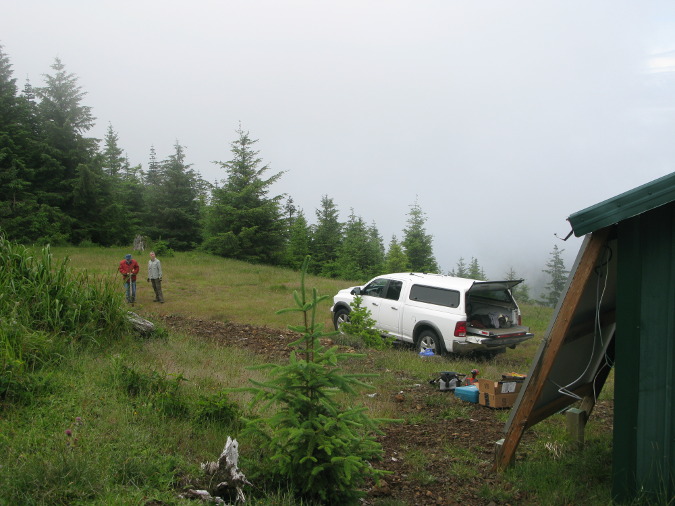
And another photo taken from the west side of the building.
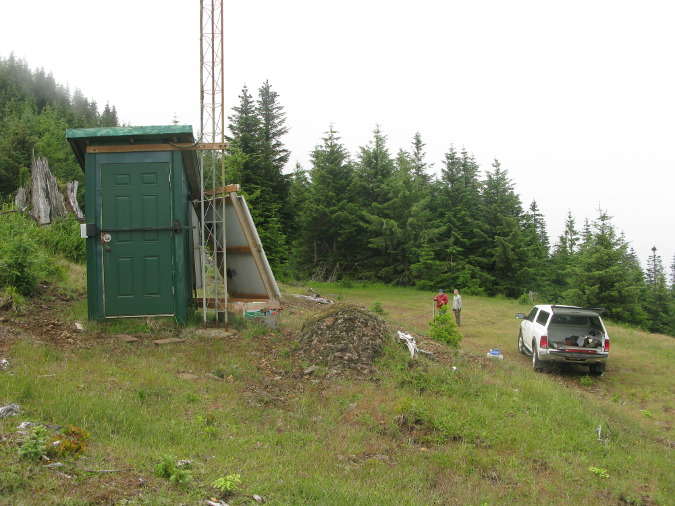
Tim and Cameron have removed the panels that were facing southeast. Here
they are removing the panels facing southwest.
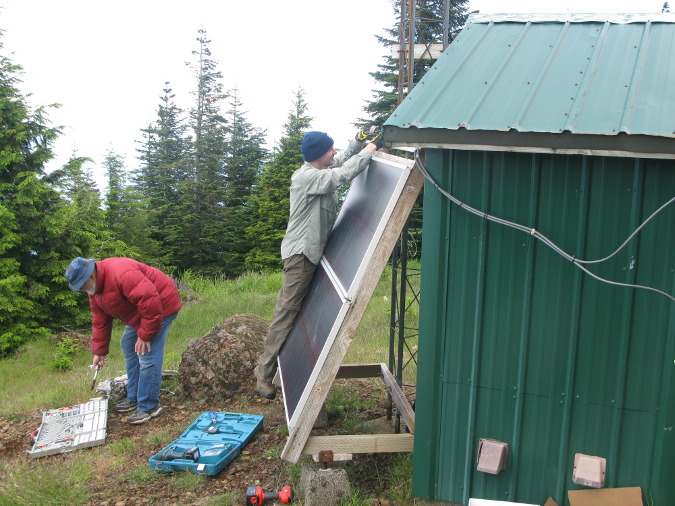
The pressure treated wood has held up reasonably well. It will all be
replaced when we build frames for the new panels. We need to use all
stainless hardware when building the new frames. One past failure was due to
screws rusting.
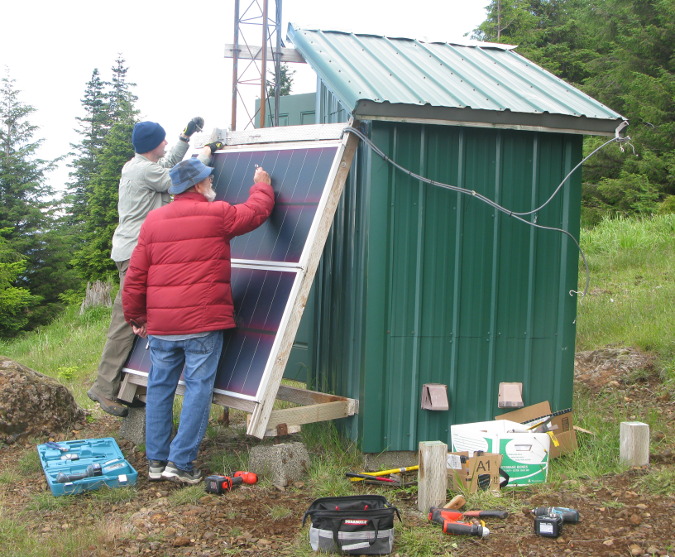
Cameron and Tim spent their time removing panels. Meanwhile Dale was
removing the existing repeater so that it could be brought down for some
upgrades. Unfortunately our building had an entry point for mice and they
decided to move in. The inside is quite smelly and has a lot of torn up
fiberglass insulation and mouse droppings that need to be removed. Some
serious clean up will be needed on the next trip as well as permanently
sealing a couple entry holes. The main entry hole was the left vent on the
side of the building which can be seen in the photo above. There is another
hole near the top that was used to run the power cables from panels into the
building. We did our best to temporarily plug the holes.
There were a lot of mice running around the inside of the building once I
began disturbing their nesting site which was inside the case holding components
of the repeater. Here is one of them.

The cabinet housing repeater radios and controller was open at the back. The
mice used this as one of their two main nesting sites. There was some
fiberglass insulation in the building, I think stuffed around the area where
some vent holds had been placed. There is no trace of that left, it all
having been used as nesting material. The repeater controller board is a
bare circuit board placed in a metal box with no lid. That was stuffed full
of insulation as was the bottom of the metal cabinet. Fortunately we plan to
replace the controller. After having mice living on top of the old
controller board I doubt that it works. The 2 meter radios are housed in
metal boxes as RF shielding so they will be fine, although the metal cases
will need a good cleaning. In the future we need to place all our equipment
inside mouse-proof containers to make sure that if mice do manage to get
inside the equipment is protected. Of course we also need to make sure the
building has no entry points available for mice.
This is a view of the repeater case. I disconnected the cables and carried
it outside and then dumped out the insulation. Four or five mice ran out of
the pile of insulation.
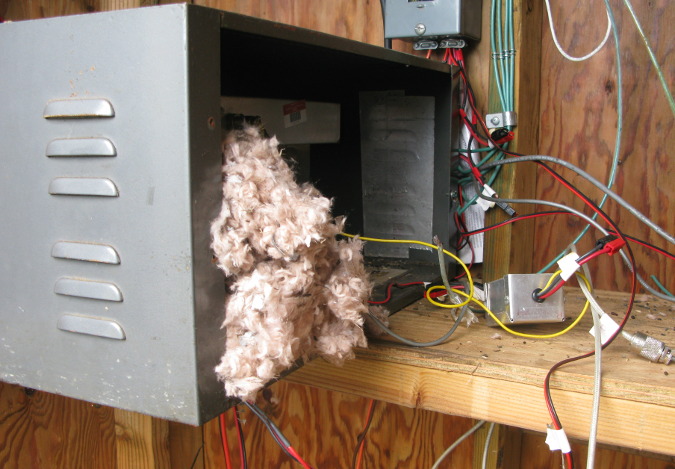
We are now ready to begin work on a support structure for the new panels.
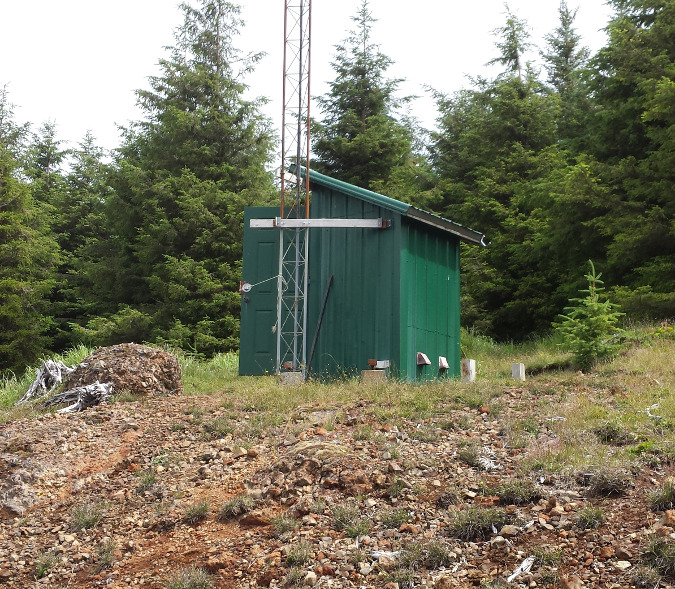
Back to main repeater page.











